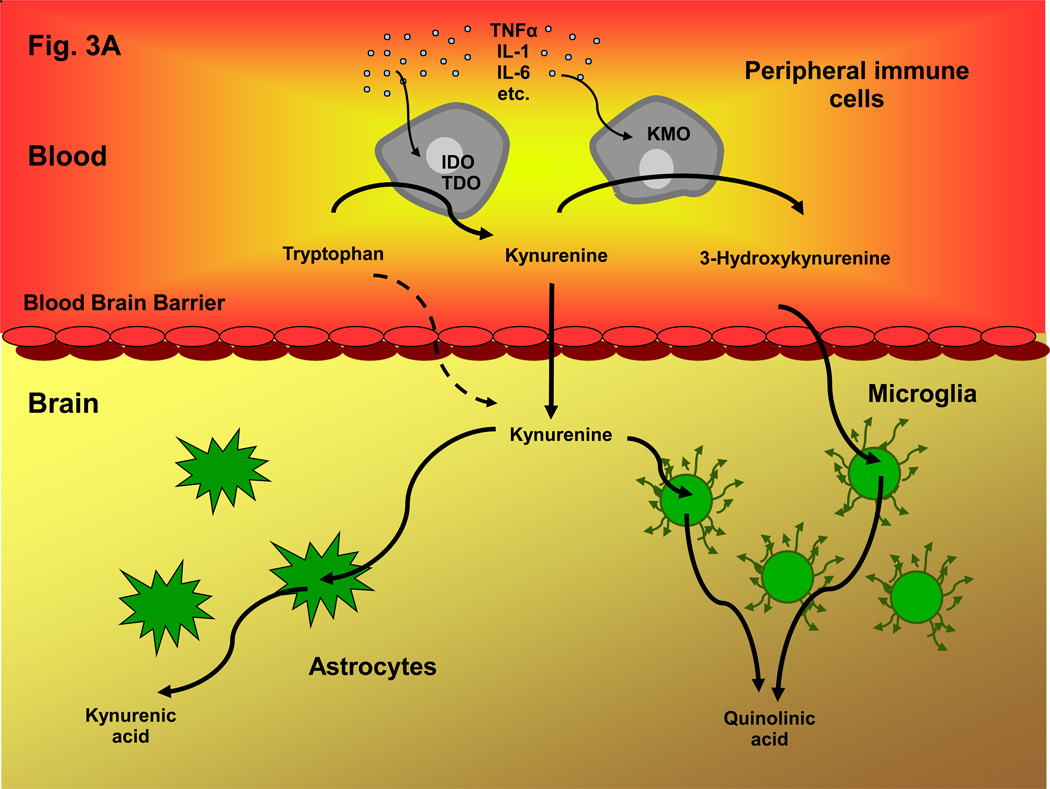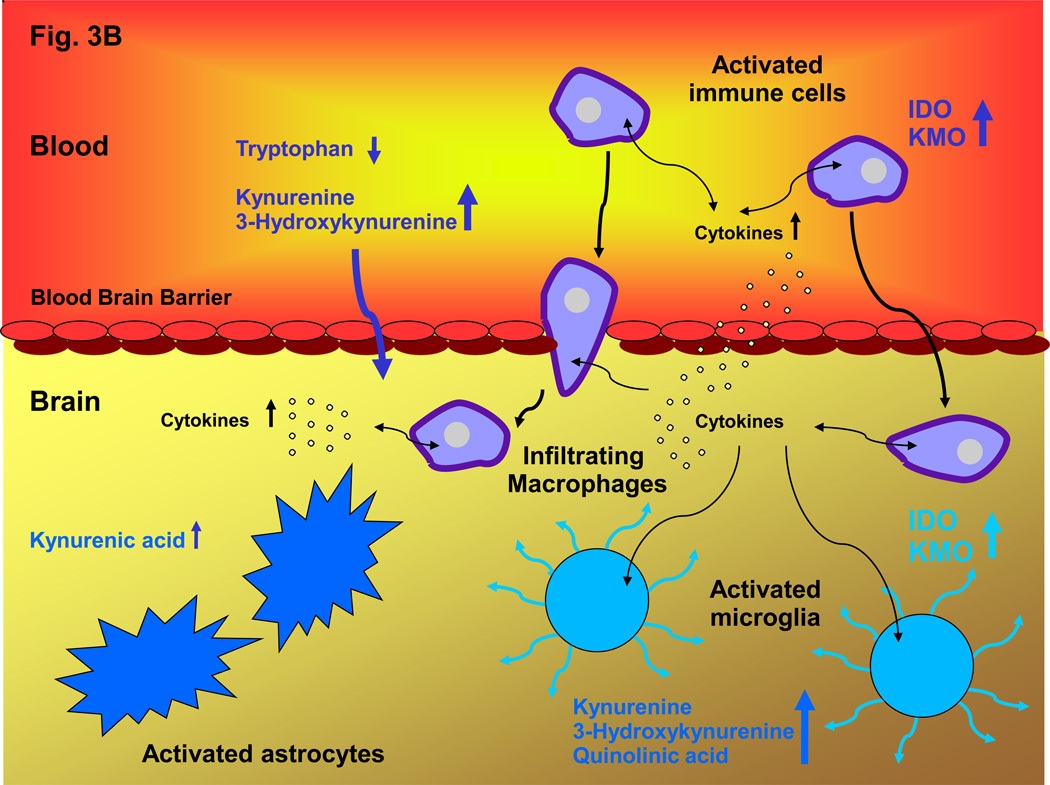Figure 3. Communication between Peripheral and Central Kynurenine Pathways under Normal and Inflammatory Conditions.
A: In the periphery, the degradation of tryptophan and the subsequent formation of circulating kynurenines is normally regulated by steroid hormones, cytokines and growth factors. These factors stimulate IDO 123, 175, and also activate, or lead to the up-regulation of, other kynurenine pathway enzymes including TDO 201 and KMO 118, 132. Jointly, they control the levels of circulating tryptophan, kynurenine and 3-HK, which all readily cross the blood-brain barrier using the large neutral amino acid transporter 42. Together with kynurenine pathway metabolism within glial cells, brain uptake of these kynurenines therefore determines kynurenine pathway flux in the brain; B: Inflammatory conditions stimulate the kynurenine pathway both in the periphery and in the brain. Activation of kynurenine pathway enzymes, especially IDO and KMO, in peripheral immune cells – such as dendritic cells and macrophages – promotes the production of kynurenine and its downstream metabolites in the blood. Increased influx of the brain-permeable metabolites, in some cases aided by a leaky blood-brain barrier 173, as well as infiltration of macrophages or microbial pathogens 113, then leads to an excess of kynurenines in the brain parenchyma. Furthermore, infiltrating cytokines stimulate the kynurenine pathway in activated microglial cells and blood-borne cells within the brain 202. Together, these peripheral and central events connect neuroinflammatory mechanisms with abnormal metabolism along the kynurenine pathway, and brain pathology.


